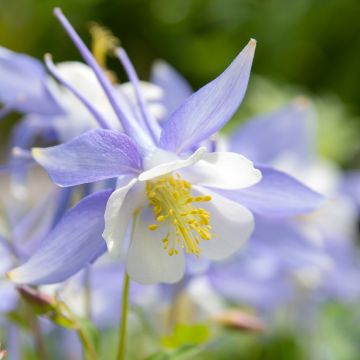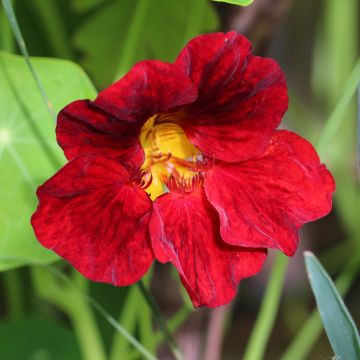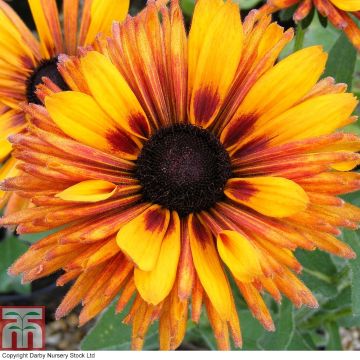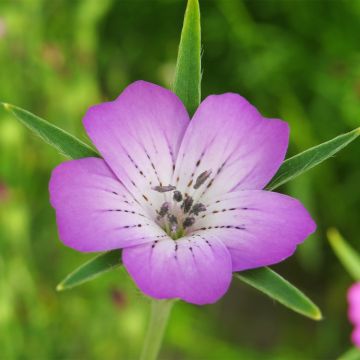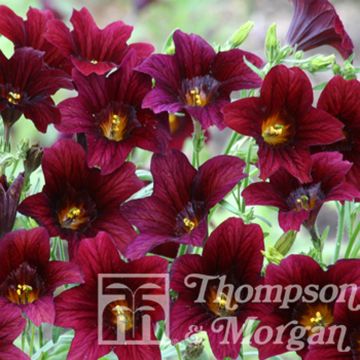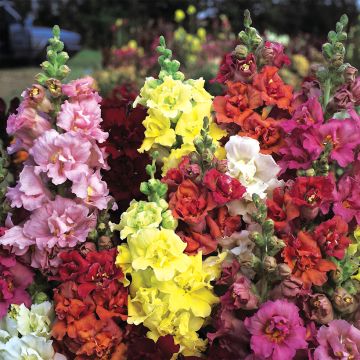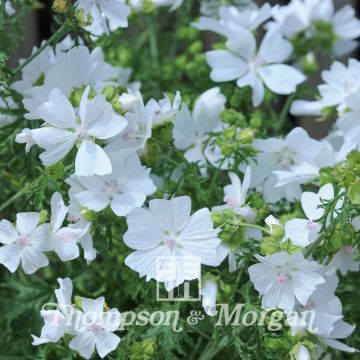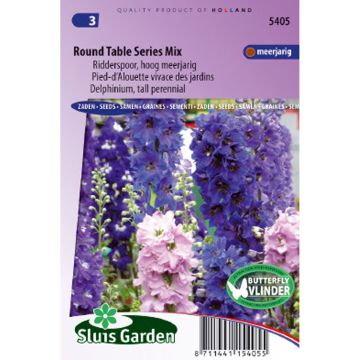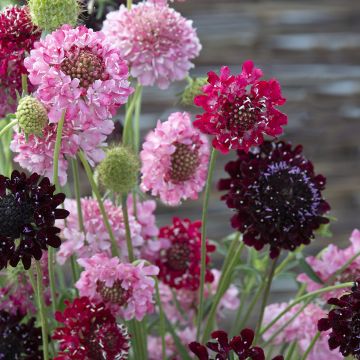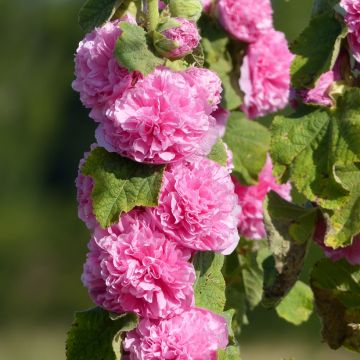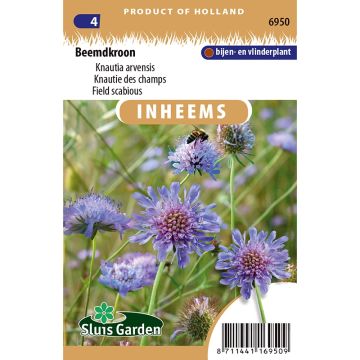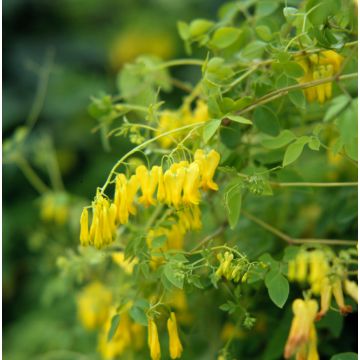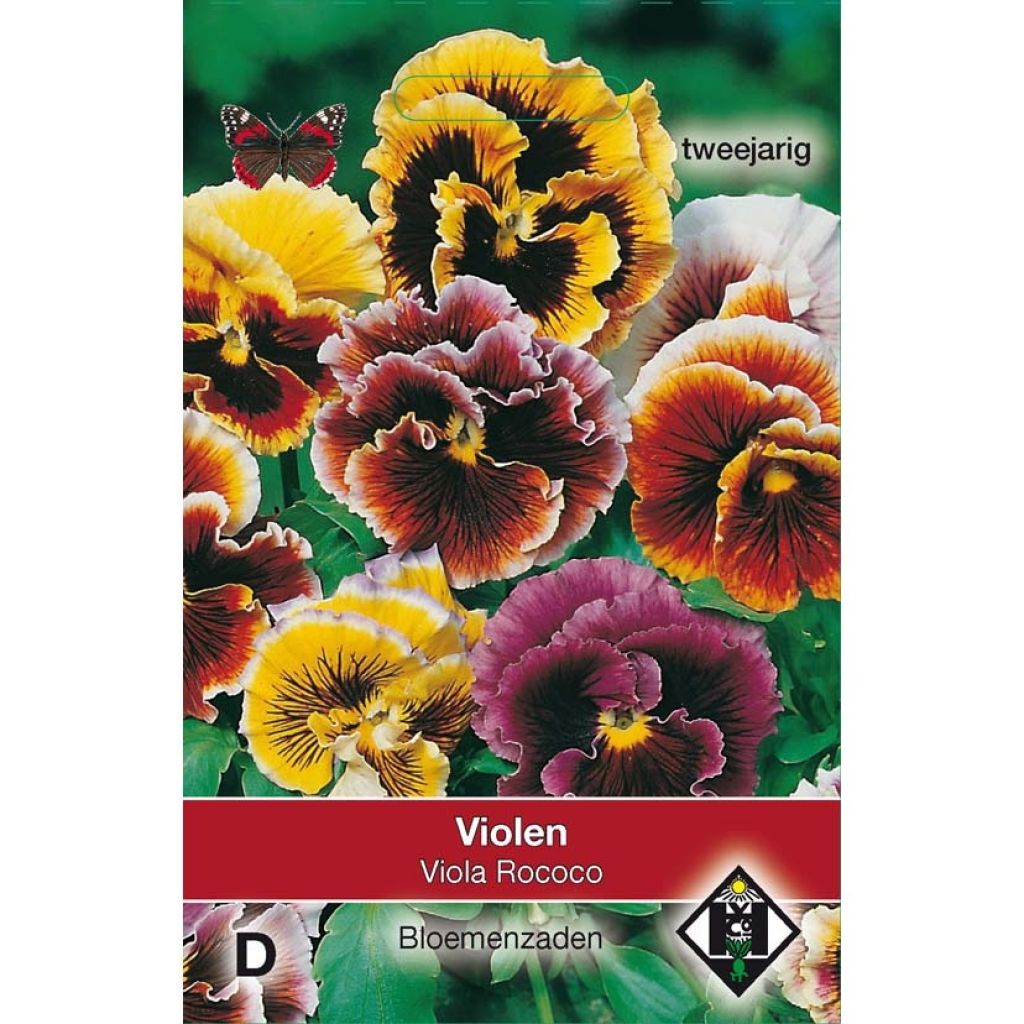

Viola Rococo - Swiss Garden Pansy Seeds
Viola Rococo - Swiss Garden Pansy Seeds
Viola x wittrockiana Rococo
Pansy, Swiss Giant Pansy, Garden Pansy, Violet
This item cannot be shipped to the selected country
Dispatch by letter from €3.90
More information
Schedule delivery date,
and select date in basket
This plant carries a 6 months recovery warranty
More information
We guarantee the quality of our plants for a full growing cycle, and will replace at our expense any plant that fails to recover under normal climatic and planting conditions.
Seed-only orders are dispatched by sealed envelope. The delivery charge for seed-only orders is €3.90.
Does this plant fit my garden?
Set up your Plantfit profile →
Description
Viola (x) wittrockiana 'Rococo' is a variety of pansy that lives up to its name: this breed, more than any other, offers an infinite variety of superb, motley, multicoloured hues, enhanced by very wavy, silky petals. Planted in large groups, these pansies produce a multicoloured surge of colour recalling the splendour and pomp of the rococo style, which is baroque and rocaille at the same time. Place them in borders, window boxes or pots. This small, abundantly flowering biennial plant can be sown from February to April for summer flowering or from June to August for flowering the following spring. It is easy to grow in humus-rich, moist soil in a sunny or partially shaded position.
This tender little flower with retro appeal recalls the chromolithographs of bygone days. Often undervalued because it is misused in public spaces, it nevertheless deserves a special spot in the garden just as much as on windowsills.
Garden pansies, sometimes referred to as Swiss Giant Pansies, are actually hybrids which are bundled together in the Viola x wittrockiana group. They belong to the family Violaceae and are usually cultivated as annuals or biennials even though theoretically, they are short-lived perennials. The 'Rococo' variety is a plant that quickly forms small, slightly spreading clumps that measure 15 cm high and around 20 cm wide. It either flowers early, from late winter to late spring, or late from late spring to late summer, depending on the time of sowing. Its flowers are large, 8 cm wide, wide open and are made up of petals with very frilly edges. The medium green leaves are elliptical and widely crenate. They persist in winter.
If you like having it in the garden, you will appreciate it most in a window box sitting on a window sill, where you can have it right under your nose without having to venture out into the cold weather. Combine pansies with, for example: primroses, sweet potato vine 'Sweet Caroline', wallflowers, grape-hyacinth, daisies... and even with grasses such as Pennisetum setaceum Rubrum for graphic effect in a more modern look. Use the colours of pansies to contrast with white, pink, pale blue or warm colours and obtain different ambiances.
Pansy petals are edible and their colours will bring a touch of originality to your salads and pastries. For this, just grow them as you would your vegetables, in the most natural way possible.
Report an error about the product description
Flowering
Foliage
Plant habit
Botanical data
Viola
x wittrockiana
Rococo
Violaceae
Pansy, Swiss Giant Pansy, Garden Pansy, Violet
Cultivar or hybrid
Other Thompson and Morgan seeds
Planting and care
Calendar : Sow pansies from February to April for summer flowering or from June to August for flowering the following spring.
Bury the seeds to a depth of 1.5 mm, in a terrine filled with good sowing soil. Cover, for example with a sheet of newspaper, since darkness is beneficial to germination. Keep at a temperature of 15 to 18° while keeping the soil moist. Germination takes between 14 and 21 days. Beware of excessively high temperatures which prevent the seedlings from emerging.
When the young plants are sufficiently developed to be handled, prick out into pots and let them grow whilst adapting them progressively to outside conditions over a period of 15 days. Plant your pansies out in the sun or in partial shade in the garden, taking care to leave 25 to 30 cm distance between each plant.
For late winter/early spring seedlings, wait for all risk of frost to pass before planting out.
Cultivation : Since pansies flower abundantly and grow quickly, they are very gluttonous and need a sunny or partial shaded position. They thrive in humus-rich, neutral to acidic, moist, fertile soil. Give them plant feed for planters once to twice a week during their phase of growth. Water regularly but not exceedingly. Remove spent flowers regularly to encourage new blooms.
Sowing period
Intended location
This item has not been reviewed yet - be the first to leave a review about it.
Flower seeds
Haven't found what you were looking for?
Hardiness is the lowest winter temperature a plant can endure without suffering serious damage or even dying. However, hardiness is affected by location (a sheltered area, such as a patio), protection (winter cover) and soil type (hardiness is improved by well-drained soil).

Photo Sharing Terms & Conditions
In order to encourage gardeners to interact and share their experiences, Promesse de fleurs offers various media enabling content to be uploaded onto its Site - in particular via the ‘Photo sharing’ module.
The User agrees to refrain from:
- Posting any content that is illegal, prejudicial, insulting, racist, inciteful to hatred, revisionist, contrary to public decency, that infringes on privacy or on the privacy rights of third parties, in particular the publicity rights of persons and goods, intellectual property rights, or the right to privacy.
- Submitting content on behalf of a third party;
- Impersonate the identity of a third party and/or publish any personal information about a third party;
In general, the User undertakes to refrain from any unethical behaviour.
All Content (in particular text, comments, files, images, photos, videos, creative works, etc.), which may be subject to property or intellectual property rights, image or other private rights, shall remain the property of the User, subject to the limited rights granted by the terms of the licence granted by Promesse de fleurs as stated below. Users are at liberty to publish or not to publish such Content on the Site, notably via the ‘Photo Sharing’ facility, and accept that this Content shall be made public and freely accessible, notably on the Internet.
Users further acknowledge, undertake to have ,and guarantee that they hold all necessary rights and permissions to publish such material on the Site, in particular with regard to the legislation in force pertaining to any privacy, property, intellectual property, image, or contractual rights, or rights of any other nature. By publishing such Content on the Site, Users acknowledge accepting full liability as publishers of the Content within the meaning of the law, and grant Promesse de fleurs, free of charge, an inclusive, worldwide licence for the said Content for the entire duration of its publication, including all reproduction, representation, up/downloading, displaying, performing, transmission, and storage rights.
Users also grant permission for their name to be linked to the Content and accept that this link may not always be made available.
By engaging in posting material, Users consent to their Content becoming automatically accessible on the Internet, in particular on other sites and/or blogs and/or web pages of the Promesse de fleurs site, including in particular social pages and the Promesse de fleurs catalogue.
Users may secure the removal of entrusted content free of charge by issuing a simple request via our contact form.
The flowering period indicated on our website applies to countries and regions located in USDA zone 8 (France, the United Kingdom, Ireland, the Netherlands, etc.)
It will vary according to where you live:
- In zones 9 to 10 (Italy, Spain, Greece, etc.), flowering will occur about 2 to 4 weeks earlier.
- In zones 6 to 7 (Germany, Poland, Slovenia, and lower mountainous regions), flowering will be delayed by 2 to 3 weeks.
- In zone 5 (Central Europe, Scandinavia), blooming will be delayed by 3 to 5 weeks.
In temperate climates, pruning of spring-flowering shrubs (forsythia, spireas, etc.) should be done just after flowering.
Pruning of summer-flowering shrubs (Indian Lilac, Perovskia, etc.) can be done in winter or spring.
In cold regions as well as with frost-sensitive plants, avoid pruning too early when severe frosts may still occur.
The planting period indicated on our website applies to countries and regions located in USDA zone 8 (France, United Kingdom, Ireland, Netherlands).
It will vary according to where you live:
- In Mediterranean zones (Marseille, Madrid, Milan, etc.), autumn and winter are the best planting periods.
- In continental zones (Strasbourg, Munich, Vienna, etc.), delay planting by 2 to 3 weeks in spring and bring it forward by 2 to 4 weeks in autumn.
- In mountainous regions (the Alps, Pyrenees, Carpathians, etc.), it is best to plant in late spring (May-June) or late summer (August-September).
The harvesting period indicated on our website applies to countries and regions in USDA zone 8 (France, England, Ireland, the Netherlands).
In colder areas (Scandinavia, Poland, Austria...) fruit and vegetable harvests are likely to be delayed by 3-4 weeks.
In warmer areas (Italy, Spain, Greece, etc.), harvesting will probably take place earlier, depending on weather conditions.
The sowing periods indicated on our website apply to countries and regions within USDA Zone 8 (France, UK, Ireland, Netherlands).
In colder areas (Scandinavia, Poland, Austria...), delay any outdoor sowing by 3-4 weeks, or sow under glass.
In warmer climes (Italy, Spain, Greece, etc.), bring outdoor sowing forward by a few weeks.

































